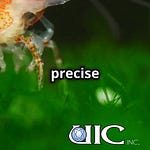The Scenario That Keeps Quality Managers Awake at Night
Imagine this: A pharmaceutical company's quality control team runs every required test on a new medication batch. Everything passes according to their standard procedures. But microscopic carbon contamination—less than 2 micrograms per sample—goes undetected because their analyzer simply can't measure that low.
The medication ships to market. Three months later, patients start reporting unexpected side effects. The FDA launches an investigation.
The result? A massive recall, congressional hearings, and a company reputation destroyed overnight.
While this scenario is hypothetical, the underlying problem is devastatingly real. Research shows that contamination and impurities cause 37% of all pharmaceutical recalls, with each recall involving an average of 400,000 product units. Most carbon analyzers are essentially flying blind when it comes to trace contamination that could trigger these disasters.
The Problem Is Bigger Than Pharma
While pharmaceutical recalls grab headlines, the carbon detection crisis quietly destroys value across industries:
In Oceanography, in Oil & Gas, in Manufacturing, in Environmental Research.
The Root Cause: An Industry Built on Compromise
Most carbon analyzers require constant calibration.
Every calibration introduces error. Every drift compounds inaccuracy. Every "close enough" measurement multiplies risk.
The detection limits that sound impressive on spec sheets? They're often theoretical maximums achieved under perfect laboratory conditions that don't exist in the real world.
Traditional combustion analyzers struggle with trace detection because they're fighting physics — trying to measure tiny signals against background noise while dealing with calibration drift and thermal variations.
The Solution: Going Back to Fundamental Laws
At UIC Inc., we took a different approach. Instead of trying to perfect an imperfect method, we built our systems on Faraday's fundamental electrochemical laws.
No calibration required. No drift. No approximations.
Our coulometer systems detect less than 2 μg of carbon across a measurement range of 0.0001-100% carbon content. More importantly, they do it consistently, repeatedly, and accurately.
The electrochemical titration process doesn't rely on comparative measurements or calibration curves. It measures the actual electrical charge required to convert carbon to a detectable form — a process governed by unchanging physical laws, not calibration standards that degrade over time.
Why This Matters to You
Whether you're a pharmaceutical quality manager worried about patient safety, an oceanographer studying climate change, or an oil company preventing environmental disasters, the question is the same:
Can you afford to make decisions based on incomplete data?
Every industry has its own version of the pharmaceutical recall story. Every field has examples where tiny amounts of undetected carbon caused massive problems.
The difference is that now, you don't have to accept "close enough" as good enough.
The Proof Is in the Testing
We're so confident in our technology that we'll test your samples for free. Send us your most challenging samples — the ones that are pushing your current analyzer to its limits. We'll show you what you've been missing.
Because when the stakes are this high, you deserve to know the truth about what's in your samples.
Want to see what your current analyzer is missing? Email us for free sample testing that could change how you think about carbon analysis.
About UIC Inc.: We've been solving the impossible carbon detection challenges for over 50 years, helping industries from pharmaceuticals to oceanography achieve precision they never thought possible.












Share this post